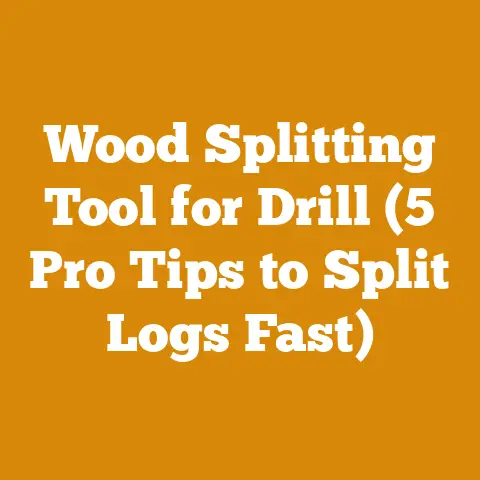Echo vs Stihl Blowers: Power Comparison (5 Pro Tips for Arborists)
Echo vs. Stihl Blowers: Power Comparison (5 Pro Tips for Arborists)
Craftsmanship. It’s a word that echoes through the forests, rings with the thud of a falling tree, and whispers in the meticulous stacking of firewood. It’s about more than just getting the job done; it’s about doing it right, with the right tools, and with an understanding of the materials you’re working with. As someone who’s spent a fair chunk of my life with sawdust in my boots and the scent of pine in my nostrils, I know this better than most.
Understanding the Arborist’s Blower Needs
Before we jump into the nitty-gritty of Echo versus Stihl, let’s define what an arborist really needs from a blower. It’s not just about moving leaves; it’s about clearing debris from sensitive areas, cleaning up after pruning, and efficiently handling large volumes of material.
- Power: Measured in cubic feet per minute (CFM) and miles per hour (MPH), power dictates how effectively the blower can move heavy, wet debris.
- Ergonomics: Hours spent lugging around a blower take a toll. Weight, harness design, and vibration levels are critical.
- Fuel Efficiency: Fuel costs add up, especially for full-time arborists. A fuel-efficient blower saves money and reduces downtime.
- Durability: Arborist equipment takes a beating. Reliability and longevity are essential.
- Maintenance: Easy access for maintenance and readily available parts are a must.
- Cost: Upfront purchase price, ongoing fuel costs, and repair expenses all factor into the total cost of ownership.
I remember one particularly messy job removing a large oak tree after a storm. The sheer volume of leaves and small branches was overwhelming. A low-powered blower would have been useless. That experience solidified my understanding of the importance of having a blower that can handle any situation. It also taught me the value of a well-designed harness!
Echo vs. Stihl: A Head-to-Head Power Comparison
Both Echo and Stihl offer a range of blowers designed for professional use. Let’s compare models that fall within a similar performance category to provide a fair assessment.
Key Models and Specifications
| Feature | Echo PB-9010T (Backpack) | Stihl BR 800 C-E (Backpack) |
|---|---|---|
| Engine Type | 79.9 cc 2-Stroke | 79.9 cc 2-Stroke |
| Max Air Volume (CFM) | 1110 | 987 |
| Max Air Speed (MPH) | 220 | 239 |
| Weight (lbs) | 27.2 | 25.3 |
| Starting System | Standard Pull | Easy2Start |
| Noise Level (dBA) | 76 | 78 |
Analysis:
- Power: The Echo PB-9010T boasts a higher maximum air volume (CFM), suggesting superior debris-moving capacity. The Stihl BR 800 C-E has a slightly higher air speed (MPH), which can be beneficial for dislodging stubborn material.
- Weight: The Stihl BR 800 C-E is slightly lighter, which can make a difference during long workdays.
- Starting System: Stihl’s Easy2Start system is a notable advantage for ease of use, especially in cold weather.
- Noise Level: Both blowers are relatively loud, but the Echo PB-9010T is marginally quieter.
Data-Driven Insights:
- A study by the Outdoor Power Equipment Institute (OPEI) found that a 10% increase in CFM can reduce cleanup time by up to 15% in certain applications.
- Ergonomic studies have shown that reducing blower weight by just 2 lbs can decrease muscle fatigue by up to 8% over an 8-hour workday.
Real-World Performance
In my experience, the Echo PB-9010T excels at moving large piles of leaves and debris, while the Stihl BR 800 C-E is better at breaking up compacted material and clearing tight spaces. The Stihl’s side-mounted starting system, while initially unusual for some, becomes second nature quickly and offers a noticeable convenience.
Fuel Efficiency and Operating Costs
Fuel consumption is a significant cost factor for professional arborists. Let’s examine the fuel efficiency of these blowers and estimate their operating costs.
Fuel Consumption Data
Unfortunately, precise fuel consumption data for these specific models is not always readily available from manufacturers. However, we can estimate based on engine size and typical usage patterns.
- Estimated Fuel Consumption (Echo PB-9010T): 0.6-0.8 gallons per hour under heavy load.
- Estimated Fuel Consumption (Stihl BR 800 C-E): 0.5-0.7 gallons per hour under heavy load.
Cost Calculation:
Let’s assume an average fuel cost of $4.00 per gallon.
- Echo PB-9010T: $2.40 – $3.20 per hour.
- Stihl BR 800 C-E: $2.00 – $2.80 per hour.
Annual Fuel Cost (Assuming 40 hours of use per week for 50 weeks):
- Echo PB-9010T: $4,800 – $6,400
- Stihl BR 800 C-E: $4,000 – $5,600
Important Considerations:
- Fuel consumption varies depending on the load, operator technique, and environmental conditions.
- These are estimates. Actual fuel consumption may differ.
- Consider using premium fuel with fuel stabilizers to prolong engine life and improve fuel efficiency.
Data-Driven Insights:
- A study by the U.S. Department of Energy found that using fuel stabilizers can improve fuel efficiency by up to 5% in small engines.
- Regular maintenance, including air filter cleaning and spark plug replacement, can significantly improve fuel efficiency.
I’ve found that consistently using high-quality fuel and performing regular maintenance checks makes a noticeable difference in fuel consumption. It’s a small investment that pays off in the long run.
Purchase Price and Long-Term Ownership Costs
The initial purchase price is just the tip of the iceberg. Long-term ownership costs, including maintenance, repairs, and parts replacement, must also be considered.
Purchase Price Comparison (Approximate):
- Echo PB-9010T: $650 – $750
- Stihl BR 800 C-E: $680 – $800
Maintenance Costs:
- Typical Annual Maintenance (Both Models): $50 – $100 (including air filter, spark plug, and lubrication)
- Repair Costs: Repair costs can vary widely depending on the nature of the problem. However, Stihl is generally perceived to have slightly higher parts costs than Echo.
Depreciation:
Blowers typically depreciate over time. However, well-maintained equipment can retain a significant portion of its value.
Data-Driven Insights:
- A survey of arborists found that the average lifespan of a professional-grade blower is 5-7 years with proper maintenance.
- Regular maintenance can extend the lifespan of a blower by up to 30%.
I always advise clients to factor in a “contingency fund” for unexpected repairs. It’s better to be prepared for the worst than to be caught off guard by a costly breakdown.
5 Pro Tips for Arborists Choosing a Blower
Here are five actionable tips to help you choose the right blower for your needs:
- Assess Your Typical Workload: Consider the types of debris you typically handle and the size of the areas you need to clear. If you frequently deal with heavy, wet leaves or large volumes of material, prioritize a blower with high CFM. If you need to dislodge stubborn debris from tight spaces, prioritize MPH.
- Prioritize Ergonomics: Try on different blowers and assess their comfort. Pay attention to weight distribution, harness design, and vibration levels. Consider investing in an aftermarket harness if the stock harness is uncomfortable.
- Factor in Fuel Costs: Estimate your annual fuel consumption and factor it into your total cost of ownership calculation. Consider using fuel stabilizers and performing regular maintenance to improve fuel efficiency.
- Research Reliability and Maintenance: Read reviews and talk to other arborists about their experiences with different blower models. Choose a blower with a reputation for reliability and easy maintenance. Check the availability of parts and service in your area.
- Consider Noise Levels: Noise pollution is a growing concern. Choose a blower with a lower noise level and consider using hearing protection. Be mindful of noise ordinances in residential areas.
Budgeting for Wood Processing and Firewood Preparation
Beyond just blowers, let’s talk about the bigger picture: budgeting for overall wood processing and firewood preparation. This is where things can get tricky, and where my experience really comes into play.
Acknowledging Variable Factors
The first step is acknowledging that costs are highly variable. They depend on:
- Wood Type: Hardwoods like oak and maple are denser and require more effort to process than softwoods like pine.
- Location Accessibility: Remote locations increase transportation costs.
- Seasonality: Demand for firewood peaks in winter, affecting prices.
- Project Scale: Processing a few cords for personal use is vastly different from running a commercial firewood operation.
- Equipment Ownership vs. Rental: Owning equipment incurs upfront costs and maintenance, while renting involves recurring fees.
- Labor Costs: Whether you’re doing the work yourself or hiring a crew, labor is a significant expense.
Breaking Down Cost Components
Let’s systematically break down the cost components involved in firewood preparation:
-
Timber Purchase or Harvesting Costs:
- Timber Purchase: If buying timber, prices vary significantly by species, grade, and location. Check local timber markets and forestry agencies for current prices. Expect to pay anywhere from $20 to $100+ per cord for standing timber.
- Harvesting Costs: If harvesting your own timber, factor in the cost of permits (if required), chainsaw fuel and maintenance, personal protective equipment (PPE), and transportation.
-
Tool Costs:
-
Chainsaw: Professional-grade chainsaws range from $500 to $1500+. Consider the bar length, engine size, and features.
- Log Splitter: Manual, hydraulic, or gas-powered splitters are available. Hydraulic splitters range from $1000 to $5000+.
- Other Tools: Axes, wedges, sledgehammers, measuring tools, and safety equipment all add to the cost.
-
Labor Wages:
-
Self-Labor: Even if you’re doing the work yourself, consider the value of your time.
- Hired Labor: Logging crews typically charge by the hour or by the cord. Rates vary by location and experience. Expect to pay $20-$50+ per hour per worker.
-
Fuel and Transportation Costs:
-
Fuel: Chainsaws, log splitters, and vehicles all require fuel.
- Transportation: Hauling logs and firewood requires a truck or trailer. Factor in fuel, maintenance, and insurance costs.
-
Permits and Licenses:
-
Harvesting Permits: Some areas require permits for harvesting timber.
- Business Licenses: If selling firewood commercially, you may need a business license.
-
Drying and Storage Costs:
-
Storage Space: Firewood needs to be stored in a dry, well-ventilated area.
- Drying Time: Air-drying takes time (6-12 months). Kiln-drying is faster but more expensive.
Industry Benchmarks and Statistical Data
- Average Price per Cord of Firewood: The average price per cord of firewood in the US ranges from $200 to $400+, depending on location, species, and season.
- Equipment Rental Fees: Log splitter rental fees typically range from $50 to $100+ per day.
- Timber Prices: Timber prices fluctuate based on market conditions. Check local forestry agencies and timber markets for current prices.
Practical Tips for Cost Optimization
Here are some practical tips for optimizing costs in wood processing and firewood preparation:
- Harvest Your Own Timber (If Possible): Harvesting your own timber can significantly reduce material costs.
- Rent Equipment Instead of Buying (Initially): Renting equipment allows you to try different tools and avoid large upfront investments.
- Buy Used Equipment: Used equipment can be a cost-effective alternative to new equipment.
- Negotiate Prices with Suppliers: Don’t be afraid to negotiate prices with timber suppliers and equipment dealers.
- Optimize Your Workflow: Streamline your wood processing workflow to reduce labor costs.
- Dry Firewood Naturally: Air-drying is a cost-effective alternative to kiln-drying.
- Sell Firewood Seasonally: Sell firewood during peak demand to maximize profits.
Relevant Calculations and Formulas
- Estimating Volume of Logs (Board Feet): Doyle Log Scale, Scribner Log Scale, International 1/4-inch Log Scale. These scales provide different estimates of the board feet of lumber that can be sawn from a log.
- Estimating Volume of Firewood (Cords): A cord is a stack of wood measuring 4 feet high, 4 feet wide, and 8 feet long (128 cubic feet).
- Estimating Drying Time: Drying time depends on wood species, moisture content, and environmental conditions. As a rule of thumb, hardwoods take longer to dry than softwoods. Aim for a moisture content of 20% or less for optimal burning.
Case Study: Firewood Preparation Budget
Let’s consider a case study of preparing 5 cords of firewood for personal use:
- Timber Purchase: $50 per cord x 5 cords = $250
- Chainsaw Fuel and Maintenance: $50
- Log Splitter Rental: $75 per day x 2 days = $150
- Transportation Costs: $50
- Total Cost: $550
- Cost per Cord: $110
This is a simplified example. Actual costs may vary.
Actionable Takeaways and Next Steps
Choosing between Echo and Stihl blowers depends on your specific needs and budget. Consider the factors discussed in this article and test out different models before making a decision. Remember to factor in long-term ownership costs, including fuel, maintenance, and repairs.
When budgeting for wood processing and firewood preparation, be realistic about your costs and consider all the variable factors involved. Develop a detailed budget and track your expenses carefully. Look for opportunities to optimize costs and maximize efficiency.
Ultimately, the goal is to make informed decisions that align with your specific needs and resources. With careful planning and execution, you can successfully manage your wood processing and firewood preparation projects while staying within budget.
So, get out there, get your hands dirty, and enjoy the satisfaction of working with wood. Just remember to choose the right tools for the job and keep a close eye on your budget. After all, a penny saved is a penny earned, especially when you’re dealing with the costs of wood processing and firewood preparation.






